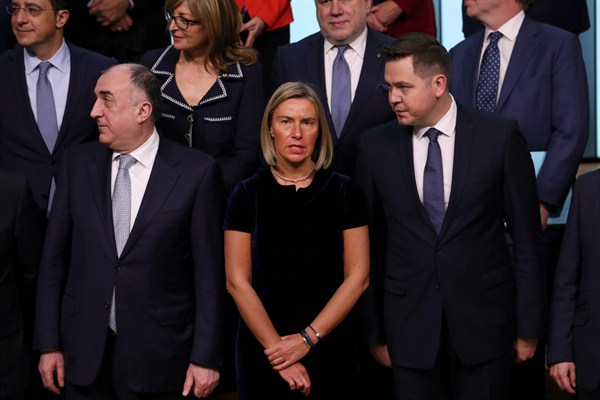Starting today and continuing through Sunday, voters across Europe head to the polls to elect a new European Parliament. But this year will bring about more than just a new group of lawmakers in the European Union’s only directly elected body. There will be bigger changes at the top of the EU, with both Jean-Claude Juncker, the president of the European Commission, and Mario Draghi, the president of the European Central Bank, leaving their posts in October. Donald Tusk, the president of the European Council, will also step down in November.
For foreign policy observers, however, all eyes are on Federica Mogherini, whose term as the EU’s foreign policy chief—officially the High Representative of the Union for Foreign Affairs and Security Policy—comes to an end later this year. After nearly five years in her post, what did she do right, where did she go wrong, and what does her successor have to look forward to?
Before 2014, Mogherini was mostly unknown beyond Italy, having been “plucked from relative obscurity by Prime Minister Matteo Renzi in early 2014 to become Italy’s youngest foreign minister,” as the Financial Times put it. Just nine months later, she was Europe’s top diplomat, responsible for coordinating foreign policy among 28 countries that can hardly come to a consensus on questions like borders and immigration, let alone a unified vision for how Europe should conduct its foreign policy. When her name was originally floated to replace Catherine Ashton, experts and policymakers were hesitant, favoring more household names like former Swedish Prime Minister Carl Bildt or former Polish Foreign Minister Radek Sikorski.

